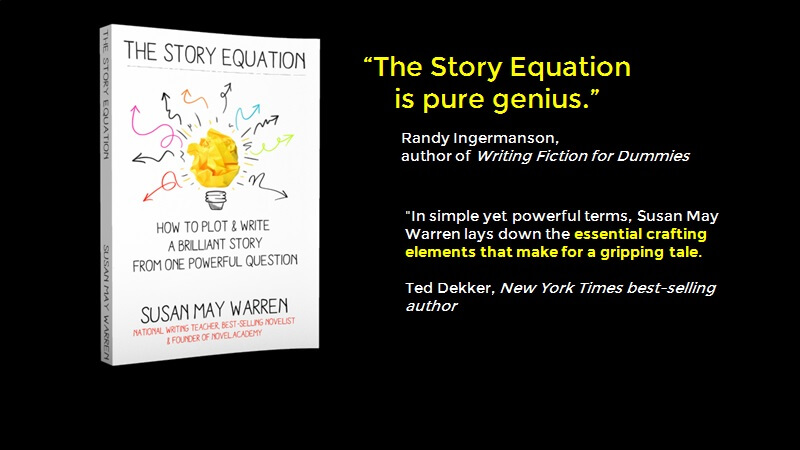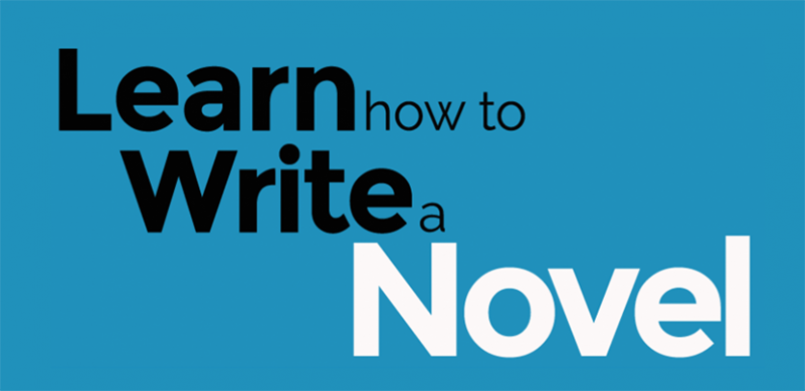
Regardless of the genre, every novelist already writes symbolically. After all, letters and words are symbols, and every novelist uses basic symbolic techniques like hyperbole, simile and metaphorical figures of speech. Any author who can master characterization, plotting, setting and voice can also learn to use extended metaphors. As with the other building blocks of fiction, it simply requires a conscious application of appropriate techniques.
Following are four important considerations to keep in mind when writing with thematic symbolism, and some related suggestions on how to implement the technique:
Make Symbols Indispensible.
To function effectively at the thematic level, symbolism must be as impossible to remove from the story as it would be impossible to remove a body’s heart or skeleton. For example, consider Robert Louis Stevenson’s famous novella in which Dr. Jekyll stands for our higher instincts; Mr. Hyde stands for our baser instincts, and the potion stands for the irresistible call of evil in the human psyche. The story is so successful on a thematic level that its title alone has become a nearly universal symbol of internal moral conflict. That success relies in large part on the fact that it is impossible to tell the story of The Strange Case of Dr. Jekyll and Mr. Hyde without these symbols.
It is also important to a novel’s commercial potential that it work equally well both in the plain sense of the story and in the symbolic sense. This is true because there are two kinds of readers when it comes to symbolism.
Some readers will never recognize the deeper meanings of a symbol. Their philosophy of life may accept only what they experience with their senses. They may be too unintelligent or lazy to participate with the novelist in the joint creative project represented by all good novels. Sadly, they may not have been instructed in the art of reading fiction. Other readers can and must be trusted with the subtleties of symbols. To achieve commercial success a novelist should write with both kinds of readers in mind.
Using Huck Finn for an example, the Mississippi River in his story functions equally well merely as a setting (a river for Huck and Jim to navigate), and as an extended metaphor for freedom. Both kinds of readers are rewarded.
All of the best and most successful thematic symbols have that kind of dual functionality.
To create thematic symbols that successfully achieve both purposes, carefully consider thematic symbolism in the very earliest planning stages of a novel. Let symbols drive the plot ideas as they grow, right alongside characterization, and let them create atmosphere and mood alongside settings and personal writing style. (For an example of integrating thematic symbolism in a novel’s planning stages see “Make Symbols Profound”, below.)
Make Symbols Omnipresent.
Successful thematic symbols do not disappear from the story after they are introduced. On the contrary, they are powerful in part because they return again and again to unify the story on an unspoken (unwritten) level from an early point in the narrative flow until the denouement.
Every mention of the laboratory, the equipment and the potion reminds us of the evil which afflicts poor Dr. Jekyll, so whenever Stevenson describes (or even when he merely mentions) that medical setting, he also reminds our subconscious of his theme. It becomes a frequent touchstone of a deeper truth that is never far beneath the surface, while also ensuring that the theme is never quite above the surface (see “Make Symbols Invisible”, below). Practically speaking, this can be accomplished by making a symbol of a setting, character, event, object, or anything else in the story which must be mentioned again and again as a natural result of the plot.
Ideally, the author should begin establishing an association between a symbol and the theme at the earliest moment possible. This is most easily done by including them both together in an early scene. One might have a character act, speak or think significantly from a thematic standpoint while simultaneously first encountering the symbol in some way (Huck Finn on the raft, thinking about freedom, for example). Ideally, this encounter would be very subtle in this establishing scene, perhaps so subtle that even the most sensitive readers will not yet recognize the connection. (Again, see “Make Symbols Invisible”, below.) Then have that character remember that moment or have them physically return to that symbol in future scenes, which deal with the theme.
It is also useful to return to the same language used earlier in thematically establishing scenes, sometimes even lifting exact quotes from those scenes to be used again at appropriate moments later. This is most helpful when the initial wording is especially memorable. The goal is to build a subtle but effective connection between symbol and theme, not all at once, but bit by bit, over the entire course of the novel.
Make Symbols Profound.
It goes almost without saying that the ultimate goal of a successful thematic symbol is to carry a grand idea much further into the reader’s psyche than any simple statement of the facts could ever go. In practice this means the most profound symbols get readers thinking about the implications of a theme, rather than simply thinking about the theme in general.
One way to pick a profound symbol is to create a list of characteristics which describe important aspects of the theme. When planning to write about forgiveness for example, one might list words such as “Difficult,” “Counterintuitive,” “Thankless,” and so on. Then go looking for something which readers will associate with those ideas.
Perhaps a highly educated character is employed in digging deep and narrow ditches for some reason. His manual labor is very dangerous and largely unrecognized or unappreciated by the people whom it benefits most. The character’s job might then be an excellent protracted metaphor for the theme of forgiveness. Like forgiveness, it is difficult (dangerous), counterintuitive (a highly educated person doing manual labor), and thankless (who ever stopped to thank a ditch digger?). In this way, rather than thinking about symbols which readers will associate with the theme in general, the symbol is attached to ideas that call attention to deeper truths about the theme.
Also, note in this example how these early considerations about theme begin to inform one’s choices about character, setting, and plot. We began by thinking about how to reveal great truths about forgiveness, and ended up thinking about a highly educated ditch digger working in a dangerous setting for reasons which are unknown as of yet, but which one suspects will surely lead in interesting directions, plot-wise. Thus, consideration of thematic symbolism becomes a way of adding depth and interest to all other key aspects of the story at the earliest planning stages.
Make Symbols Invisible.
If a symbol calls attention to itself as a symbol, then the symbol is a failure. To understand why, we have only to consider the moment when written letters begin to work symbolically for a new reader.
Every new reader starts by learning to associate letters with spoken sounds. Then they try to “read” by thinking of each letter in a word one by one, sounding them out, and then speaking those sounds together quickly in order to listen to the combined audible effect and match up the result with a spoken word they already know. If they do this long enough, eventually a moment comes when they suddenly see the whole word as a single thing rather than as a collection of letters.
At that moment two almost magical things occur. First, in bypassing the sounding out of letters, the letters themselves—the symbols—become functionally invisible. Second, the new reader begins to think of words not as words, but instead as the ideas they represent. For true reading to occur the letters must disappear completely behind words, and the words must disappear completely behind ideas. As symbols, letters and words are functionally invisible to accomplished readers. Indeed, until this happens, we are not really reading. And so we see that symbols only begin to function properly when we no longer think of them at all.
Think of what happens when a magician reveals the mechanics of a magic trick. Just as nothing kills the magic faster, so nothing kills a novel faster than an author who insists on pointing out the meaning of a symbol. After the Wizard warned Dorothy to “Pay no attention to that man behind the curtain,” of course she could see nothing else. Authors who make this mistake do not trust their own ability, and do not trust their readers, and their mistrust becomes a self-fulfilling prophecy.
Practically speaking, this secrecy about symbolic meaning is not difficult to achieve. It simply requires us to resist the almost overwhelming temptation to point out the connection between a symbol and the theme. But because that temptation is in fact nearly overwhelming, on another level maintaining subtlety in symbolism may be the most difficult challenge any author faces. It requires us to accept the fact that some readers will miss the meaning of our most cherished words. In short, it requires humility.
Of course, it is possible to write an entertaining and successful novel while giving very little thought to theme or symbolism. But if that is the direction a novelist takes, let it be because she prefers it, and not because she feels she can go no deeper. Any novelist working in any genre can dig deeper if she wants to. All she has to do is consider theme as an equal alongside plot, character, setting and style. And when it comes to conveying theme, no tool available to novelists is as powerful as symbolism.
Athol Dickson’s novels have been favorably compared to the work of Octavia Butler (Publisher’s Weekly) and Flannery O’Connor (The New York Times). One of his novels is an Audie Award winner. All five of his most recent novels have been finalists for the Christy Award and three have won, including his most recent novel, Lost Mission. Athol lives with his wife in southern California.
Want more like this?
Get Novel Rocket articles daily
Let's make this easy!
Get the Novel Rocket articles right to your inbox
Success! Now check your email to confirm your subscription.
Our Sponsors
-
This was one of the best articles on characterization I have ever read and the reason, I believe, Cindy's books have become bestsellers....
-
Perhaps one of the most frustrating aspects of being a Christian who reads speculative fiction (supernatural, sci-fi, horror, fantasy, etc.)...
-
If you’re a writer who is serious about writing, you know that in order to be successful you have to be able to pitch your book—and no, I do...
-
by Mike Duran Paradox is not something Christians like to concede. We believe Jesus is the Answer, and as such, questions exist to be dispel...
-
By Mike Duran I'm a legalist by nature, so it's no surprise I got bogged down by writing rules. I'm not talking about the Strunk...
-
Lori Wick is a multifaceted author of Christian fiction. As comfortable writing period stories as she is penning contemporary works, Lori’s ...
-
Brian Garfield is a novelist, screenwriter and producer who wrote his first published book at the age of eighteen. His novel, Hopscotch, wo...
Contact us with questions about how to Get Published...and Stay Published!
Copyright ©
Novel Rocket























Thank you! Thank you! Thank you! I've been struggling with this in my WIP.
ReplyDeleteNovel Journey has become my classroom. Early every morning, I can't wait to see what my lesson will be about. Many times I pass along what I've learned and tell every new writer I meet about this site. Today's post was amazing in so many ways. An answer to prayer of what I'm trying to write and direction to get there. I so appreciate this blog and am very grateful for the time that is put into it. Many Thanks, Cindy Jones
ReplyDeleteKaren and Cindy, thanks for taking time to send your encouraging words. I wish you great success as you explore important themes through symbolism.
ReplyDelete